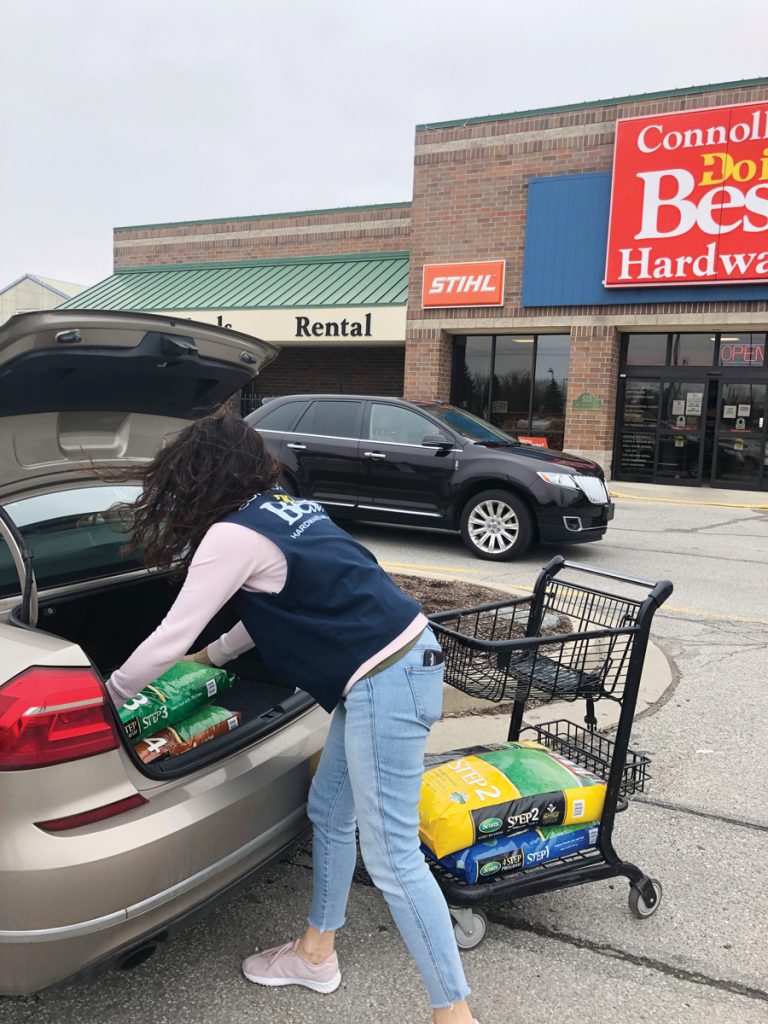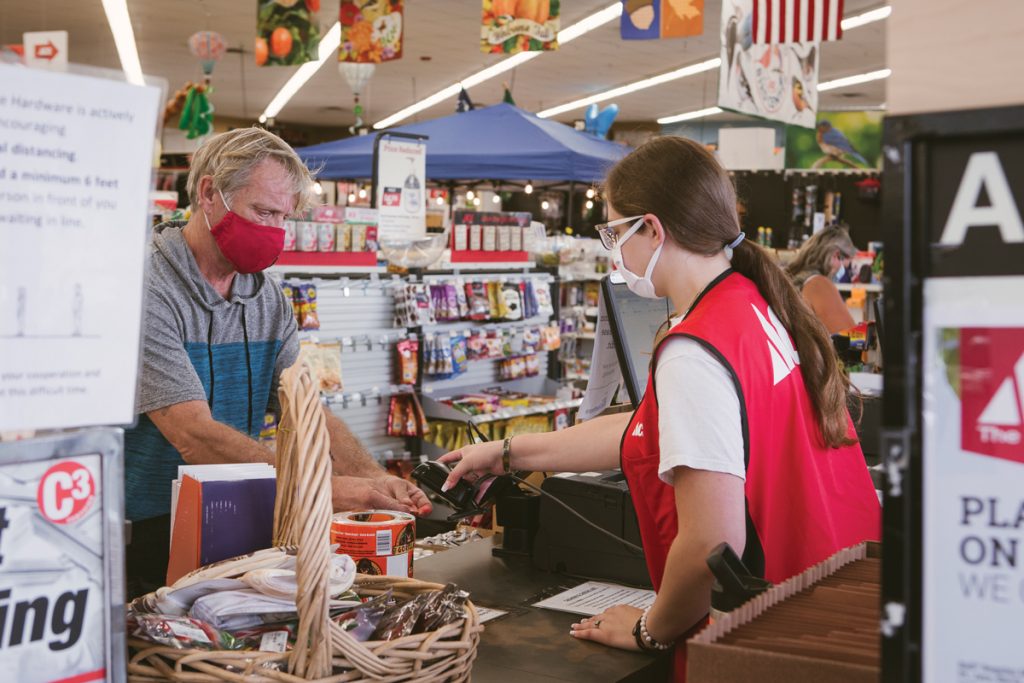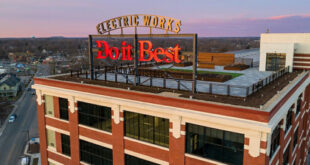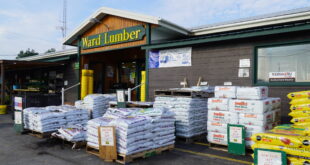Independent home improvement retailers have stepped up to meet the challenges of serving customers during a pandemic. Many shoppers have avoided in-store shopping, while others have swarmed to stores to stock up on everything from hand sanitizer to bags of mulch. The past six months have challenged independent retailers to reconsider their businesses’ approaches to customer service.

Costello’s Ace Hardware, which has 32 locations in Maryland, New Jersey and New York, and Connolly’s Do it Best, which has five stores in Fort Wayne, Indiana, are very different, but both companies’ teams reacted immediately to position their stores to meet customer needs during the pandemic.
The retail landscape has changed, but retailers’ efforts to offer unparalleled customer service endure. This story is the first installment in a two-part series on how operators have altered how they do business due to COVID-19 and which changes they plan to keep.
In the Beginning
In late February, demand for N95 face masks shot up at Costello’s Ace stores in and near New York City. COVID-19 had already started changing business, and the Costello’s Ace Hardware team took immediate notice.
“Right around the second week of March, we started seeing our cleaning products just emptying,” CEO and co-owner Michael Costello says. “After a few days, we were looking at sales and saying, ‘What’s going on here?’ We weren’t thinking there was a serious health risk that could be in our neighborhoods or stores. We thought we were seeing excessive preparedness.”
Lauren Mathews, communications manager for Connolly’s Do it Best, realized COVID-19 would impact business significantly when products vanished and became nearly impossible to restock.
“We were seeing products being sold in quantities it would’ve taken us years to sell,” Mathews says. “We were seeing a run on products that aren’t normally huge sellers for us.”
By mid-March, the Connolly’s team was in touch with retail peers across the U.S. Some were operating in areas that had been hit early by confirmed coronavirus cases. All were experiencing product shortages and witnessing customers buy large quantities of household cleaners, paper towels and protective masks.
As grocery stores and big-box stores ran out of essential products, Mathews and her team noticed more people coming into local home improvement stores in search of those common items.
For some shoppers, it was a revelation that many home improvement stores carried the items they and their families were searching for.
“We have a mantra: ‘Just ask us.’ It’s about progressively thinking how we, as a company, can continually adapt to meet the needs of the customer.”
“I think that initial run on products, even though it was stressful, was beneficial,” Mathews says. “As more people stayed at home past March, they remembered a trip to their local hardware store and were more willing to come in later for DIY projects.”
At the same time, online and phone orders were flooding Costello’s Ace. “
We saw e-commerce growing at a level we hadn’t seen before,” says Rob Feiler, Costello’s executive vice president of sales and marketing. “We really had to have an adapt-and-move philosophy right from the beginning.”
Before the pandemic, Costello’s stores were filling about 10 online or phone orders per day. By late April, the stores were filling 10 of each type of order per hour, with no signs of slowing.
Early Adapters
The executive team at Costello’s realized quickly that their operation’s response to COVID-19 could not remain solely reactive.
Their initial efforts were similar to many other retail businesses. They amped up their store cleaning protocols, installed plexiglass screens at the service counters and asked employees at every level to be team players and help wherever needed, even if tasks fell far outside their job descriptions.
Mathews and the team at Connolly’s took similar actions in their stores.
“The first true change that took place was implementing social distancing,” Mathews says. “We put plexiglass shields at the register, but curbside service was the biggest early change we made. People were calling left and right to get curbside pickup.”

Connolly’s Do it Best had always offered curbside service to customers who asked for it, but never promoted it as a true differentiator for the store. “
Curbside pickup was suddenly popular. We had almost as many people calling for curbside pickup as people coming into the store at one point,” Mathews says.
Costello can remember offering curbside service since he was a teenager, so providing the contactless service wasn’t unusual for the stores.
“When I was 15 years old working for my father’s hardware store, a woman would call us up and say, ‘My baby is sleeping. Could you come out to my car and help me?’” Costello says. “We have a very open mind as far as what curbside service means.”
Though curbside pickup was popular, it required fine-tuning at both operations. Mathews and the Connolly’s team moved to ensure all team members were conducting curbside pickup transactions uniformly. Questions had to be addressed about when and how to take payment, whether accepting cash would be advisable and what to do if a credit card was declined.
“We figured things out quickly. We had to,” Mathews says. “We developed a process and decided that when there were issues, we would address those individually. The whole goal was to help customers and our team social distance.”
Phone and online orders began stacking up at the Costello’s stores, so the executive team reassessed the stores’ curbside and in-store pickup methods and began delivering orders as quickly as possible to decrease the backlog at the stores.
If customers didn’t promptly arrive to get their curbside pickups, then Costello’s added the customers’ addresses to delivery routes and dropped off the items for free.
“In the beginning, it was all hands on deck. I made a couple hundred deliveries myself in my personal Honda Accord,” Feiler says. “It wasn’t like we were showing up at someone’s home and no one was there. Everyone was on lockdown.”
Costello’s Ace personnel also began helping find new sources of products as customer demand strained their supply chains. When needed, the marketing director worked alongside frontline employees in the stores, and Costello and other executives made hundreds of product deliveries.
Daily executive team phone calls and twice-a-week calls with store managers became normal as the entire company tried to understand how to meet the challenges of massive demand for products while supply chains lagged and COVID-19 developed into a worldwide crisis.
“I consider us a typical family business,” Costello says. “How we usually deal with increased demand is everyone works harder and everyone is asked to do a little more and chip in. And then at some point, you get to a critical point when you need more systems and need to get more organized.”
A Call to Hire
Costello and his team knew stretching the staff thin and lowering customer service standards were undesirable and unsustainable.
The team had to reassess how they were doing business and decide to take action in ways that would work long term for the staff and better serve customers.
After two weeks of unprecedented order volumes, executives realized Costello’s needed to hire new employees, dedicate workers to handling phone and online orders, buy more delivery vans and add new delivery routes.
They grew the company’s product sourcing team from two people to six to work through supply chain challenges and find alternate manufacturers and distributors they hadn’t used before.

In addition, they dedicated more staff to human resources so Costello’s could recruit and train new staff. They hired 200 people between April and June, adding cashiers, delivery drivers and warehouse workers.
They also mapped out 10 new delivery routes and bought three delivery vans.
Large-scale adaptations required significant communication internally to get all employees on board with the ideas and understand not only what their responsibilities are but how to do their jobs as things changed, Costello says. He used phone calls, video messages and letters to keep communication fresh with employees and regularly thank them for their efforts.
Communication Is Key
Business improvements weren’t always top-down decisions at Connolly’s. On many occasions, Mathews and the team adjusted protocols in response to on-the-ground feedback from staff.
“It was important to hear employees and to let them know we trust their opinions and will use them to improve the business overall,” she says. “I think they were more willing to adapt to changes when they knew we truly were willing to adapt to protect them or make their jobs a little easier.”
Another important component of Connolly’s communication early on was social media. Customers used the store’s social media pages, Facebook Messenger and Google messages to inquire about items and place orders.
“Social media was our No. 1 form of communication with customers. We saw an influx of followers in March and April, so people knew social media was a powerful way to connect with our business,” Mathews says. “Social media let us get messages and business changes out to thousands of people at once, and we really leaned on it.”
Changes in Retrospect
At Connolly’s, many new business procedures had to be refined or even completely rethought as the company deployed them.
When curbside pickup gathered steam at the business, Mathews recognized the need to standardize the process to ensure employees and customers had a reliable workflow to follow.
“…we were able to refine curbside service into a single workflow that worked best for our team and business. We went from a really flexible process to a step-by-step process.”
Cashiers answered phones and took orders from customers. If they could leave the register, they fulfilled orders ahead of customers’ arrival. If cashiers were in the middle of ringing up customers, they handed orders to other associates, who gathered the items.
The team aimed to take credit card payments over the phone, but would adjust and handle payment once customers arrived if they objected to an over-the-phone payment.
“The early strategy was to do whatever worked best for customers,” Mathews says. “We always kept customers’
needs at the forefront, but later we were able to refine curbside service into a single workflow that worked best for our team and business. We went from a really flexible process to a step-by-step process.”
Serving customers the way they want to be served during the pandemic has also been the goal at Costello’s Ace. Doing so has cemented relationships with existing Costello’s Ace customers and brought in many people who had been unfamiliar with the stores.
The team at Costello’s raced initially to meet the massive demand for online and phone orders, but then hired additional people to answer phones and keep track of in-store pickups, curbside pickups and home deliveries.
Regardless of the pandemic, many of the changes would have been necessary to stay competitive long term, Costello says.
Shoppers’ expectations for integrated online and in-store service were already evolving. The pandemic sped up the process and Costello’s adapted more quickly in response, he says.
“We have a mantra: ‘Just ask us.’ It means we do business on customers’ terms,” Costello says. “It’s about progressively thinking how we, as a company, can continually adapt to meet the needs of the customer.”
The Story Continues
Like many other retailers, the teams from Connolly’s Do it Best and Costello’s Ace Hardware have learned valuable lessons about adaptable customer service during the pandemic. Discover how they’ll use that insight to power their businesses into the future in the November issue of Hardware Retailing.
 Hardware Retailing The Industry's Source for Insights and Information
Hardware Retailing The Industry's Source for Insights and Information








